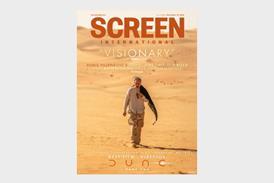Doug Frank remembers The Bodyguard with fondness. Not the movie, the soundtrack. Powered by an ascendant Whitney Houston, the 1992 release sold 17 million copies in the US market and the same number around the world.
It was and remains the best-selling movie soundtrack of all time. It is a record that is likely to stand for all time.
But like Houston's career, soundtracks are not what they used to be. 'Ten years ago, my walls were covered with platinum and gold records,' says Frank, president of music operations at Warner Bros Pictures and a 21-year veteran of the film-music trade. He is referring to the industry indicators of success.
'In the US, platinum is the sale of 1 million records, gold 500,000. 'These days, a success is 1 or 2 million. Ten years ago, you might have sold 10 or 20 million.'
Long a staple of the recording industry, soundtracks have suffered with the decline of music sales. But the soundtrack's downturn has been steeper.
The category, once an easy money-spinner for the producer who licensed the rights, has been damaged by the shift to file downloads and the vast and readily accessible storage capacity of personal digital music libraries.
'We've seen the last of those huge sellers,' says Frank. 'In the 1980s or 1990s, we were putting single recordings on these soundtrack albums. So if you liked the song, you had to buy the album. Now you just download the track. That's changed things a great deal.'
Soundtracks still sell on CD - Disney's High School Musical sold 4.2 million copies according to industry tabulator Soundscan, and most of those were CDs - but there are fewer hits. And the shift to digital is moving apace.
Mitchell Leib, president of music and soundtracks for Walt Disney Studios, points to the numbers for the follow-up soundtrack, High School Musical 2, which has sold 1.9 million units to date, including 151,000 downloads. 'On half the sales (of the original film's soundtrack), we've done almost as many digital downloads.'
Randall Poster has been a music supervisor on more than 50 features, including all but one of Wes Anderson's films as well as Richard Linklater's School Of Rock and Todd Haynes' Bob Dylan-inspired I'm Not There. (For a profile of Poster, click here)
Over his 15 years in the trade, Poster has seen tremendous change, particularly since the downturn in the recording industry. 'Film studios used to be able to count on a certain contribution from record companies to supplement the music budget (on a film),' he says. 'Not any more.'
Furthermore, diminishing CD sales have made record companies and music publishers more dependent on revenue from licensing their catalogue.
'They are aggressive in trying to place their songs and get the most money they can out of every situation,' says Poster. 'It's starting to feel a little desperate.'
'The records that suffer are the compilations,' says Jason Linn, executive vice-president of music for New Line Cinema.
'It's just a bunch of songs taken from the movie and added to a CD. When consumers can buy any track they want for 99 cents (on iTunes), what's the motivation to buy somebody else's collection just because it was in the film''
Hence, says Linn, 'there's even more reason to focus on original content.'
The last soundtrack to break into the Recording Industry Association of America (Riaa) top 100 all-time best-selling albums was in 2000 with the Coen brothers' O Brother, Where Art Thou', a collection of bluegrass and gospel songs recorded specially for the film by the likes of Allison Krauss and Emmylou Harris.
It sold 8 million copies (see box, below right) and won several Grammy Awards, proving songs need not be original, just the interpretation.
Wes Anderson's The Life Aquatic With Steve Zissou (2005) is considered the gold standard of creative soundtracking. Brazilian singer and composer (and actor) Seu Jorge wrote and recorded live-to-camera on solo acoustic guitar bossa-nova versions of David Bowie tunes.
A second album was also released, The Life Aquatic Studio Sessions Featuring Seu Jorge, with the original versions recorded for playback on the set. Anderson might not have set out to save money for Buena Vista, but Jorge presented a significantly less expensive alternative to using Bowie's master recordings.
The company licensed only the publishing rights, representing half the cost of the original versions. A major artist can receive more than $100,000 per song for publishing and master-recording rights for the world.
Original compositions are certainly not a new phenomenon. Mike Nichols' The Graduate was a showcase for the music of Simon & Garfunkel, and bespoke songs for the film, such as Mrs Robinson, became so popular they were covered by the likes of Frank Sinatra - albeit with lyrical adjustment.
Paul Thomas Anderson claims his film Magnolia began with the soundtrack by Aimee Mann and was then scripted and shot to her songs. The recent Steve Carell comedy Dan In Real Life features songs written by musician Sondre Lerche while on set.
Original music can even drive the production of a film, as was the case with New Line's Hairspray, released earlier this year. Linn says there is still money to be made from soundtracks, even modest releases. It is just a question of scale. 'We sold 25,000 copies of the soundtrack for Sideways. If we had done that on Hairspray, it would have been a disaster.'


















No comments yet